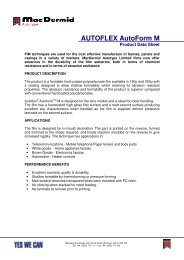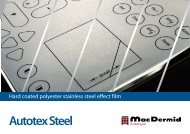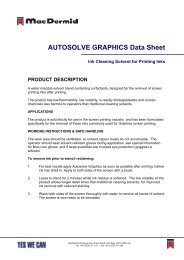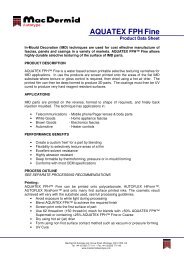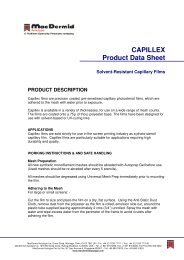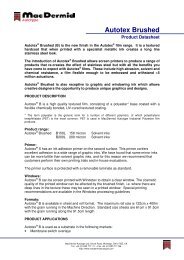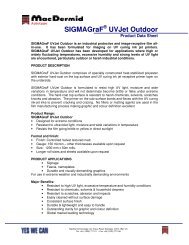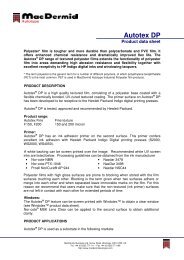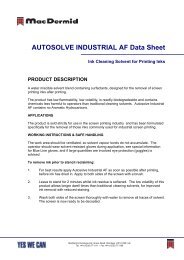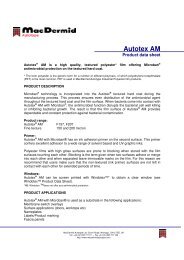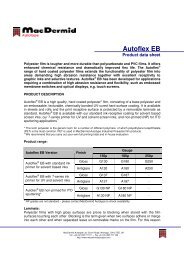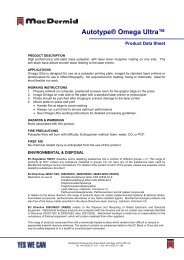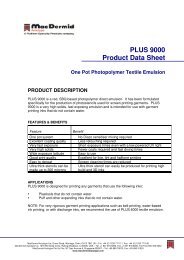Screen E-Book (.PDF) - MacDermid Autotype
Screen E-Book (.PDF) - MacDermid Autotype
Screen E-Book (.PDF) - MacDermid Autotype
- No tags were found...
Create successful ePaper yourself
Turn your PDF publications into a flip-book with our unique Google optimized e-Paper software.
oughness can slow slumping; it probablydoes but I’ve not personally seen any convincingevidence either way.It’s obvious that if you have a solvent thatflash evaporates your slump will also bereduced. The downside is that the ink willdry in to the mesh.Finally, if you can cool the substrate relativeto the ink on the mesh (either by havinga heated ink/mesh or a cooled substrate)then the ink viscosity increases and theslump decreases.Slumping on the beachHave you ever noticed a ‘beach’ effectaround your printed line or dot? It’s anultra-thin bit of something that lots of ushave seen but never been able to analyzeor explain. It turns out that the science ofslump offers some insight.Spreading of a liquid is impossible withouta ‘precursor film’. This was at first thoughtof as a mathematical device to do thecalculations, but these films, perhaps only0.1µm thick can be seen under the rightconditions. There are hints that the polymersin the ink can have difficulty enteringthe precursor film; if they can’t get inthen the ink can’t spread. This correlationbetween beach and precursor film is onlyspeculative, but it might be possible for aningenious ink designer to take advantageof this effect and produce a low-beach,low-slump ink.Discouraging and encouragingThis summary of slump might be a bit discouraging.If you have to start with a specificink thickness onto a specific substratethen the only practical changes you canmake are to the ink. Changing the surfacetension will have some effect, but it’s small.So in general you have to alter the viscousbehaviour of your ink. Because there areso many misunderstandings about the effectof the viscosity on the ink deposit, a lotof ink designers are confused about whatparameters can be adjusted to reduceslump.But if you are printing with a good low-EOM, low-Rz stencil, the viscosity has noeffect on the ink deposit so you are free toengineer the ink for optimum slump. Thisis the encouraging aspect of this work.AcknowledgementAlthough there are many papers on thescience of slump, the work of ProfessorGlen McHale at Nottingham Trent Universityis especially insightful. His papers onspreading of drops and cylinders are thebasis for the computational results shownhere and his help is gratefully acknowledged.Readers are welcome to a copy ofthe <strong>MacDermid</strong> <strong>Autotype</strong> Drop SpreadModeller based on Prof. McHale’s theory.34



